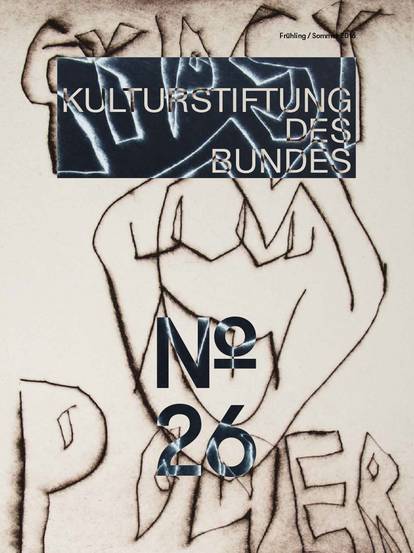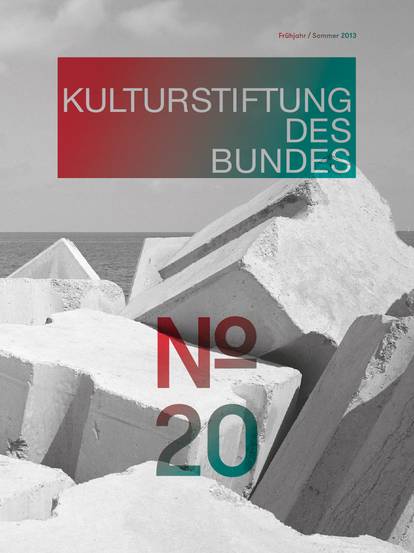1. When it comes to revolution, there is only one position that does it justice. It is the position that Kant, citing the example of the French Revolution in The Conflict of the Faculties, called “partisanship”. In matters of revolution, there is no such thing as neutrality. Regardless of how far away it is, be it the distance from Kant’s Königsberg to Paris of the Revolution, or from 2017 to 1917 – one can only say yes or no to it. One can only recognise events as revolutionary by taking sides with them and in them, as “players on one side against those on the other” (Kant). Even the counter-revolutionary recognises the revolution; he does so by fighting it. A position that attempts to be fair and balanced to both sides in a revolution (for there are only two sides in every revolution), however, does not do it justice. Exercising impartiality when considering both sides actually dissolves revolution. In matters of revolution, a non-partisan position is unfair.
As there are only two parties in a revolution, one can only assume one of two positions with regard to it. The one position is that of Zhou Enlai, the prime minister of the People’s Republic of China who, in response to Richard Nixon’s question regarding his opinion of the French Revolution, allegedly answered “It is too early to tell”. For Zhou Enlai, revolution is the conflict between parties which only exists in the now, the present. This conflict persists, we are still fighting. This is the political position; it confirms the existence of revolution by taking sides in it. It is always embedded in the revolution.
The other position on revolution was perhaps best formulated by Alexis de Tocqueville. Fifty years after the Revolution, he thought himself “far enough” away to “recognise” in retrospect what it had all been about: “the completion of the most arduous task, the sudden and violent conclusion of a project which ten generations had worked to achieve” – the founding event of a social order that became our own. While the Chinese communist lives in the revolutionary present, the middle-class liberal always regards revolution in the past tense. The liberal position is: There once was a revolution. The liberal looks back at the revolution as an event of the past. In so doing, all he is saying is that there is no revolution.
While the Chinese communist visualises the revolution (and behaves accordingly in a political fashion), the position of the middle-class liberal consists of historicising it. To him, the revolution is part of history. In other words, he casts revolutionary change as an evolutionary occurrence which has been going on for a long time (“ten generations”!) and happens on its own accord, i.e. nobody caused it. Liberalism even (and particularly) defines revolution, which initiated the change, as a thing of the past, as something which vanished as soon as it was accomplished. From an historical point of view, the revolution dissipates, for it only exists in the present.
2. The presence of revolution, however, is not a matter of being simply, immediately present. It only exists for the spectators “who themselves are not involved in this game”. This is Kant’s decisive insight which Judith Mohrmann (in her study Affekt und Revolution) impressively analyses. Yet revolution doesn’t exist for those who are merely “involved” in it. Revolution only becomes present when partisan participation divides in two: in one part consisting of those “involved” and the other comprised of “observing” participants. The subject of revolution is split in half between protagonists and spectators, both of whom differ from one another and likewise need each other. For both bind strength with weakness; both possess a strength which is also a weakness, and a weakness which is likewise a strength.
According to Kant, the weakness – and also strength – of the spectators of the revolution lie in their “well-wishing participation”. He who reads, discusses and debates the Revolution in France in Königsberg is not doing so through deeds which would have any effect in the “game of great transformations” on the ground. He is doing it only out of desire; well-wishing participation is a participation in wishing. And the same applies to those in Frankfurt and Berlin in 1967, reading, discussing and debating, who participated in the revolutions in St. Petersburg in 1917/18, in Cuba in 1958, in China in 1949 and 1966. Not only did they wish to participate; the participated by wishing.
But this weakness of observing participation is simultaneously its strength. The fact is that participation by wishing is the only way one can truly participate in revolution. Wishing a revolution is by no means a deficient position which could be overcome by transitioning to actual practice, vigorous intervention or active involvement. Revolution could never be realised if there were no wish for revolution, the revolution in wishing, a revolution of wishes. Making a revolution happen is not a matter of fulfilling a wish and translating it into action, from shifting from the wish to the act. This is a fetishism of practice. The partisan participation in revolution, however, must consist of participation in the form of wishing.
Kant also explains why this is the case – because “well-wishing participation” verges on “enthusiasm”. The well-wishing participation of the spectator, who is indirectly involved in the revolutionary game, borders on enthusiasm. Enthusiasm is the excitement generated by something great, overriding – by an idea. In his well-wishing participation, the spectator is excited by the revolution because something is achieved within it which extends above and beyond himself. Those directly involved in the revolution, however, are in danger of losing enthusiasm. They have to fight. They have to calculate, unmask hidden intentions, anticipate risks, develop strategies, come up with tactics and implement them. And they have to build. They have to create new orders, experiment with new structures while mobilising existing capabilities in order to satisfy the most urgent needs. The involved participants in the revolution must serve as both soldiers and organisers. Lenin’s writings, published immediately after the successful October uprising at a time when it was necessary to safeguard their success, demonstrate this. Does the active participant even know that he is a revolutionary, or what it means to be a revolutionary? Indeed, the revolutionary doesn’t know what a revolution is. The spectator, for his part, does know – Kant in Königsberg, Benjamin in Berlin, we today – participating from a distance with a revolutionary wish bordering on enthusiasm.
3. The participant, who is involved in the revolution, needs the spectator, as the latter witnesses and strengthens the enthusiasm which is at risk of slipping away. Kant calls it “ideality” and defines it as the idea of a legal order which the revolutionaries intend to establish because, to them, it “appears to be the right thing”. The enthusiasm of the spectators of the revolution is their “emotional participation in the Good”, i.e. the declaration of the virtue of the revolution. Does the revolution, therefore, require enthusiastic spectators to remind the revolutionaries of the good to which they have pledged themselves and which they – in their day-to-day battles and in the drudgery of the long haul – appear to have forgotten? Are the spectators the true idealists – a role the revolutionaries could no longer play? Does the spectator have the privilege of taking an idealistic position which cannot be held once acted upon? If this were the case, there would be no revolution. The fact is that revolution is an idealistic act – it does good (otherwise it is no revolution).
Revolutionary action must consist of both – the idealism of the observing participant, and the realism of the active, involved participant. The spectators’ enthusiasm for the revolution is not a projection, not merely enthusiasm for their own sake, i.e. excitement about being excited. Rather, they discover something in the actions of the revolutionaries, something of which they are not even aware themselves, namely that revolutionary acts are themselves “borne of enthusiasm” (Mohrmann). The spectators’ enthusiasm for the revolution is fuelled by the enthusiasm of the agents of the revolution: the enthusiasm without which their actions would not be revolutions, and which they inevitably have to forget or even suppress.
Kant’s fundamental insight implies that the actions of the revolutionaries do not comprise a revolution. Rather, the revolution occurs in a place between the protagonists and the spectators. It is not an event that can be dated and localised, but rather an intermediate space, a relationship. Only in this form, as a relationship, can there be revolution. Moreover, in this relationship, the agent plays a double role. In the relationship between the protagonist and the spectator (in whom the revolution exists), the action is riven in two. Observing has the effect of splitting the action. In the eyes of the spectator, revolutionary action always has two sides: idealistic and pragmatic/strategic, enthusiastic and sober/calculating.
4. In 1930, Dziga Vertov made a film in which he portrayed the industrialisation and collectivisation efforts of the first Soviet five-year plan. Because the film score was largely comprised of sounds and noises of industrial life in the coal-producing region of eastern Ukraine, the film received the subtitle “Symphony of Donbass”. But its main title was Enthusiasm. The intent of the film was not only to arouse enthusiasm, but also to portray it (or rather, to arouse enthusiasm by portraying it). The film depicts the enthusiasm of revolutionary change. It depicts the elation which is effective and present in the change itself. The revolutionary change evokes enthusiasm because it is in itself enthusiastic.
Vertov understood revolutionary change in the same way Lenin had constantly described and promoted it, especially after October 1917 – not as the spectacular coup marked by the storming of the Winter Palace, which Eisenstein had restaged on the occasion of its tenth anniversary, but rather as a long-lasting, arduous effort to reorganise the status quo (most crucially, that of work). Both Lenin and Vertov knew that the revolution is not a one-time event. It is an enduring process (whether it is a permanent process was the point of contention with Trotsky). In a treatise titled The Immediate Tasks of the Soviet Government, Lenin wrote in April 1918 that in order to secure “the speediest possible economic revival”, it was necessary to overcome the “brutality”, “savagery”, “despair” and “aimless bitterness” of the war and resulting revolution, and “bring about a complete change in the mood of the people and to bring them on to the proper path of steady and disciplined labour”. The first task of the revolutionary government was to “discipline” – disciplining labour and the worker.
Vertov’s film demonstrates how this happens. Or rather, it shows how the disciplining of labour is accomplished as a revolutionary process. While Lenin’s declaration remains little more than an assertion, i.e. the disciplining of labour by the Soviet government amounts to the liberating “break with the rotten past” – Vertov shows it and thus makes it real. The promise of the revolution is that there is truly a difference between the old, capitalistic and the new, revolutionary disciplining of labour. Lenin is not able to explain where it lies. Vertov, on the other hand, depicts this in the form of training, learning and practising, through which disciplining is achieved. In a key scene of the film, Komsomolets, untrained volunteers, receive training in the physically gruelling job of coal mining. Vertov shows the exercises in which the trainees gain the necessary skills for their future occupation – a ballet of repetitive movements, which in their endlessness seem to forget their purpose. The purely mechanical aspect of practising senseless discipline ultimately becomes a purpose-free game. There comes a moment when discipline and slapstick are indistinguishable (perhaps that’s why Chaplin liked this film so much). Vertov shows us what Kleist described, namely that mechanisation can be liberating.
Revolution is not the act of upheaval, the moment of anarchy, in which the old order loses its head. Nor is it the effective establishment of a new order whose stability and validity can lead us to forget the terrors which established it in the first place. Revolution is rather a change of the aspect of life which is least free – life as disciplined action, as work. Revolution does not alter it by eliminating it. Without disciplining – training, practicing, testing – there can be no skills and therefore no action. Revolution changes the act of practising itself; it makes it an end in itself which delights one because it’s playful. Or lively (for excitement, enthusiasm is enlivening, animating).
The existence of past revolutions depends, therefore, on us, who – and how – we remember them. For revolutions which have passed, which are merely a result of the past, are not revolutions. In order to have been revolutions, they require spectators in the present whose well-wishing participation verges on enthusiasm. This enthusiasm is not a blind, dumb excess of emotion. It is, or defines, a “mode of thought” (Kant). The wish to participate in revolution corresponds to practising a different way of thinking. It is a change of life in thinking – in thinking, at least in thinking, in attitude.

![[Translate to English:] Magazine 38](/fileadmin/_processed_/f/1/csm_Magazin38_Cover-Vorschau_921x1230_689f428dc3.jpg)
![[Translate to English:] Magazine 37](/fileadmin/_processed_/b/c/csm_Mag37_Cover-Vorschau_921x1230_b5129fdb2a.jpg)
![[Translate to English:] Magazine 36](/fileadmin/_processed_/2/a/csm_Cover_Magazin36__issuu_2f3cef97bb.jpg)





![[Translate to English:] Magazine 30](/fileadmin/_processed_/c/b/csm_magazin30_vorschau_9005f773d3.jpg)














